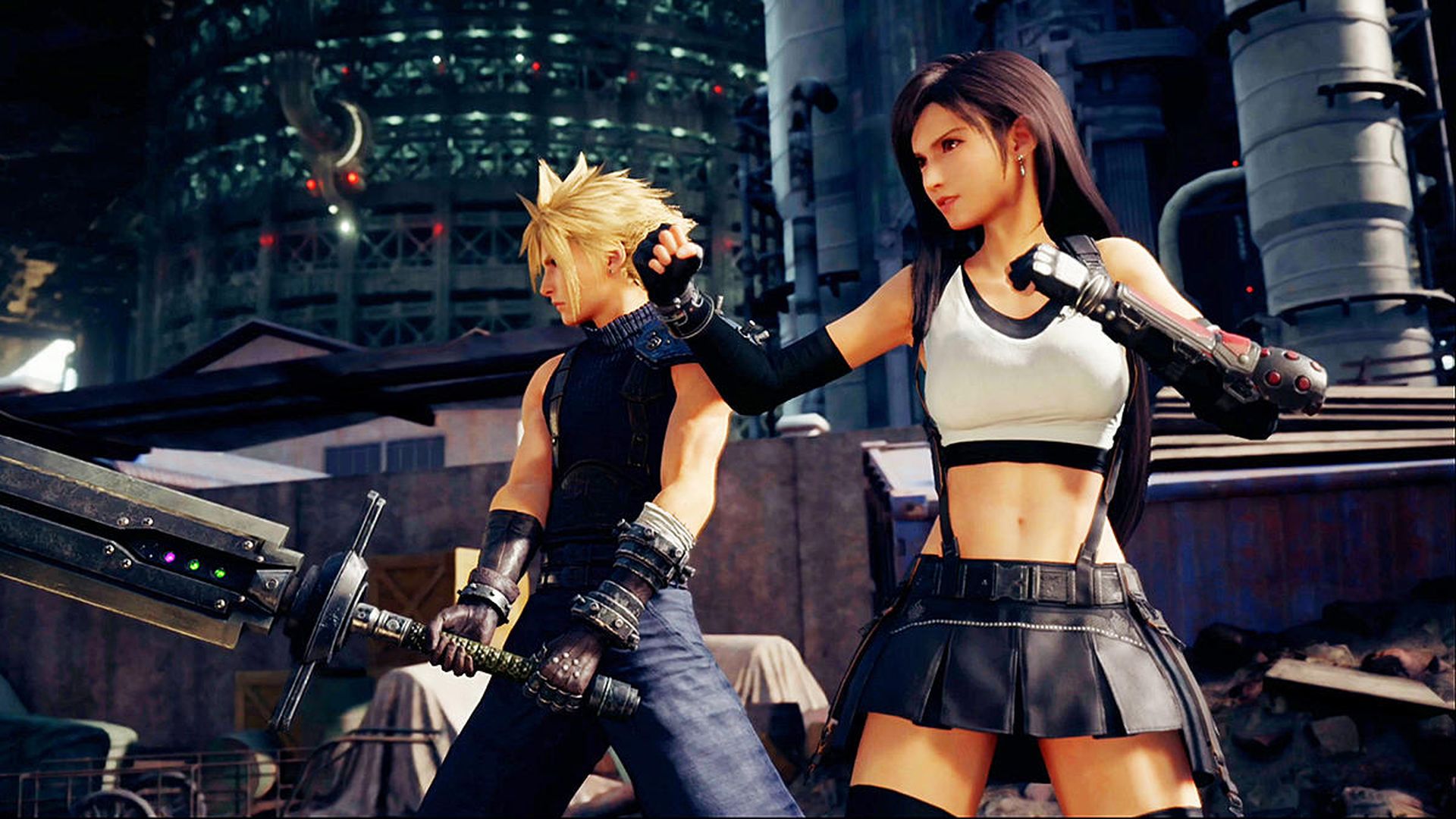
Nostalgia is a wonderful thing. You can look back through those rose-tinted spectacles and remember wonderful experiences from your past. Only they’re never really as they were. The lighting’s better or you said that classic line that you only thought of later; memory plays tricks with us, sugar-coating over banal everyday life with a sweeping Hollywood false narrative.
It’s the same with videogames. Each generation there are games we play to death and love, then the next console comes out, we move on, and before you know it twenty years has gone by. You always intended to get back to that game you remember so fondly, but you never quite did. Nostalgia tells you it would be wondrous to re-live those memories, but the reality is often blocky polygon-ugly graphics, midi-sound, nonsensical story jumps you were happy to accept as a teenager. Going back to the original Final Fantasy VII is like that; it’s got lots of charm still, but it won’t be exactly how you remember.


But what if there was a way you could enjoy it all over again, the way it remains in your mind, with polygon-perfect graphics, surround sound, and a fleshed-out narrative with no holes.
Square Enix have bottled nostalgia. With the Final Fantasy VII Remake they have taken on a heady prospect – what amounts to the most beloved video-game of all time – and delved deep into what made it so perfect; the timeless characters Cloud, Tifa, Barret and Aerith; the iconic setting of Midgar; the archetypal story of rebellion and corporate greed; the details, the materia, the iconography, the villains, and they have enhanced it and refined it into something beyond even that which the most nostalgic among us could have ever expected. It’s joyful, jaw-droppingly beautiful and from the opening prelude lullaby to the new theme in the closing credits, it is full of that essential ingredient that the original had in spades; magic.
In fact, when I started it up, I just sat and listened to the opening menu for three minutes, the swell of the strings stirring something inside me that had longed to be revived (with a phoenix down) for 23 years.


You can Hear the Cry of the Planet
FF7R relates a story that has become entrenched in the psyche of the millennial gamer. Thirteen million copies of the original game have been sold. That’s a lot of kids who grew up and absorbed this in their teenage years and it’s stuck with them. But it’s stuck with them for a reason. It’s not just any game and it’s not just any story. It is a story of corporate greed and eco-terrorism. A story of magic and friendship, camaraderie and self-less sacrifice. Cloud Strife, the blond guy with the massive buster sword, is an ex-SOLDIER, a combat elite army under the control of a mega-corporation called Shinra. Shinra have their fingers in everything and they run the mega-city of Midgar as their own kingdom. They are the government and police, they pay your salary if you’re lucky enough to have one, and they power everything using eight huge reactors that guzzle up ‘mako’, the life blood of the planet.
But Cloud doesn’t work for them anymore; he’s a mercenary for hire and he’s joined up with a group of eco-terrorists calling themselves Avalanche, who are on a mission to destroy the reactors bleeding the planet dry. Barret is their cells’ leader, a huge muscled stand-in for Mr T, with a gun for an arm. And his team consists of Jessie, Biggs and Wedge, and Cloud’s childhood flame, the beautiful hand-to-hand fighter Tifa. Cloud also befriends the charming and carefree-seeming flower-seller Aerith, who is wanted by Shinra’s goons at every turn. Before long Avalanche have got far more than they bargained for when Shinra turns the tables on them, using them as an excuse to make everyone’s lives harder. Cloud’s past begins to catch up with him in the form of Sephiroth, that grey-haired sinister looking guy with the long thin sword. Are they just visions, because Cloud is sure he saw Sephiroth die five years ago?


And so begins an epic that encompasses all facets of life in Midgar, from slums to sewers, entertainment districts to bars, to the plates and trains, the reactors that power them and the ominous evil-filled tower that stands at the centre of it all. Midgar deserved its own game, and the remade version is a living, breathing (albeit smoggy) city.
One of the greatest updates from the original, the thing the grounded me the most and gave Midgar its gravitas, is a simple thing; as you wander about during most of the game, you can tilt your camera and look up and what you will see is the underside of the eight upper plates where the rich and powerful live. This simple thing gives the player such a sense of scale, it makes you feel the oppression of those who live under it every day. As a gripe I would say it was way too bright down there, but the game explained that well enough with an early mission involving shutting down the artificial lamps that light the slums. It’s this kind of thing that got me, and got me good.
In the original game, the Midgar section and all its seminal moments happened in just the first 6-10 hours of a world-spanning game. FF7R has fleshed this early section out to a meaty 40 hours for most gamers.


Under the Rotting Pizza
Expanding that time-frame means you now have a lot more of it on your hands. Time to get a room in Sector 7, set yourself up as a mercenary and do odd jobs around the slums, for the right price. The remake leans in to the merc idea in a way that many western open-world RPGs do, from Witcher to Mass Effect, and in the way that FF15 did. The merc is the perfect job for a game that wants to throw many quests at you to fill your time, and though Cloud was always for hire, the original didn’t have the kind of structure that modern games do, and the merc angle was not explored that far.
However, the slums first few quests are really basic and pretty off-putting. Find some missing cats, or kids, fight some mutant rats in the garbage. Not stellar plots for sure, but still better than most in FF15. I like the mechanic, and thankfully these are just the appetizers, there to get you used to quests in this game, ready for the main event; Wall Market. There is no more wretched hive of scum and villainy in all of Midgar, and there is whole bunch of far more interesting quests here. Although the actual purpose and order of them have been moved about, these quests are in large part a holdover from the original game.


Wall Market’s chapters are a blast from beginning to end. Full of lively characters of all persuasions, you’ll be dancing, squatting, and cross-dressing in a fun-filled extravaganza of gender-swapping, somewhat at odds with the tone of the rest of the game. It’s all in good fun, very tongue-in-cheek and never strays into insulting territory. Kudos to the writers, where many could have gone so terribly wrong in this section, they nailed it. I’m also very glad it was included in all its cross-dressing glory; where it could so easily have been left on the cutting room floor, it has been embraced.
Final Fantasies of the last few years have suffered from not having many interesting locales. FF15 was barren from edge to edge, with barely anything worth getting out of your car for. FF7R ditches this open-world formula in favour of a more linear approach with open free-roaming sections in certain of the eighteen chapters. In a narrative-driven game, I found this mechanic made perfect sense, and the in-between chapters were so full of story, or exploring dungeons, that I certainly didn’t lament the lack of an open-world. My gripes are in the lack of more layered and interesting stories within the quests. There’s also a fair amount of back-tracking in the later questing chapters. You have to redo the sewers at a minimum, but the developers at least added new routes, which of course makes them entirely different non-descript linear corridors.


Seventh Heaven
From the sparkling clouds of mako that dissipate from the corpses of your enemies to the flawless hair, skin and clothes of its cast, from the jaw-dropping realisation of Midgar, to the intense flurry of movement and animations in battle, FF7R’s graphics are a thing to behold. They are also seamless, flowing from cinematic into gameplay, into battle without any drop in quality, and all rendered in game. It’s a level of polish I don’t think I have ever seen before from any game. Ever.
The original had some of the greatest FMV cut-scenes the PS1 could handle, but the transitions from big-hands, tiny arms and no mouth (field) to still-no-mouth but correct body proportions (battle) to gorgeous FMVs were messy at best. FF7R has no real issues with pop-in or frame-rate drops despite everything you see on screen at once. In short, graphically, FF7R is a technical marvel and a benchmark for the industry.


Those Who Fight Further
Another area in which FF7R pours cold water all over its competition and its recent predecessors is combat. Battles are fast-flowing, responsive and often incredibly intense. They are easily the most fun to be had in an RPG battle system in this generation. Gone are the original’s turn-based squared-off fights and in their place a battle system that half-retains turns, and half goes all-out fluid combat. I feel this was what Square Enix intended to make when they envisioned Versus 13, sorry FF15. But where that one became a boring management system of auto-dodge auto-fighting, a criticism that has been levelled at the series since 12 and 13, FF7R demands your attention. In FF7R the dodging is all up to you. You control both a single character and everyone else’s turns. You fill your ATB (Active Time Battle) gauge with physical attacks, and then when full, you get a ‘turn’. Time slows down to a crawl at the press of a button allowing you to use an item, magic attack, or one of many abilities, which to a player of the original are mini limit-breaks. Limit-breaks are still possible, but they are uber-moves that take a long time, and a lot of pain, to prime. Summons also return, but are again only possible under certain circumstances and are largely out of your control. But you mostly don’t want or need them, battle is too much fun to want a huge-demi god to finish it off too quickly.
Bosses are a thing to behold and are often very powerful, making for desperate knees-weak-palms-are-sweaty battles that will test your quick-thinking and mastery of the intricate, but somehow intuitive, combat system. Everything has a shortcut, so you can start stringing together combos without needing to go into the battle menu. It’s fast and frenetic trying to keep the upper hand.


However, a lot of battles, especially with harder enemies, devolve into a frantic healing-fest, desperately trying to keep your team alive through any means possible. This can be really intense and fun, but after 20 hours its starts to feel very deliberate and as if the battle system has been designed to always have you on the brink of death, but not quite dead. This then starts to feel a little cheap. This also extends to the near constant barrage attacks – when you are desperately dodge rolling or even just running away, but nothing can stop the cheap barrage of five to ten shots, that will rinse your character down to red health. There’s also a constant focus on your lead character from bosses, to the point I sometimes only had to switch characters for an attack to stop and to thereby save the previous character.
There’s a hell of a lot of good in this battle system, but there’s some things in there I hope they refine for future entries in the series.


The in-battle camera can be an issue, especially in tight-space fights such as underground, or in the really vertical levels with aerial enemies. I often found myself crammed into a corner, and the camera was flickering between people’s feet making battle almost impossible until I was able to free it by dodge-rolling into more space.
Because enemies are in the world with you, ala FF15, there are no random battles (that age-old RPG staple), and there is no sudden transition into or out of battle. Stats come up at the side of the screen and are short, sweet and informative, but that means the remake is missing something I never even considered lamenting; the after-battle summary and music, the celebratory swirling of Cloud’s sword, and the EXP bars filling. There are a few instances of it but not enough for me, mostly in the arena battles you can engage in and every now and again Barret obliges with a little sung version.


Oppressed People
Maybe that brings us neatly on to systems. RPGs can live or die on complex menu systems, but FF7R is full of sexy responsive menu design, intuitive and simple to use. There’s a frugality to items as well. There are only a small number of weapons, accessories and item types, probably because other well-known weapons like Cloud’s Ultima sword are being held back for future entries. Menus are exceptionally easy to navigate because of this streamlined approach to items. This is not the type of RPG where you have a million items you never know the use of. I’m looking at you Dark Souls.
Materia is one of the simpler and more instinctive magic systems in the FF franchise, and I am glad to see it here in all its glory. You level up, your magic levels up. You put Materia in a weapon, linked with elemental and you can use that element in your physical attacks. It makes sense in a way few magic systems do. Many classic spells and buffs return, using the suffixed names that only began with FF8, Thundaga instead of Bolt 3 etc, along with some interesting new additions, like Auto-cure, Assess and Chakra. Best little detail; seeing your materia choice in the correct colours on Cloud’s sword, or Tifa’s gloves, ala Dead Space.


Flowers Blooming in the Church
The soundtrack of the original game has gone down in history as some of the greatest and most evocative video game music of all time. So there no surprise that FF7R has recommissioned Nobuo Uematsu to wonderfully reimagine almost every piece. A lot of this soundtrack has already been reimagined to death, so it’s pretty impressive that these choons can sound fresh as well as nostalgic.
You know a game’s music is well thought of when it becomes a collectible in-game with over 30 remixes to be found all across the city. Every time a new and recognisable track came on, like Aerith’s or Tifa’s themes, my heart would soar. They’ve also added a plethora of synthy new tracks that seamlessly fit in with the original’s score. Look out for Midnight Rendezvous, and the remix of Oppressed People, as a few highlights.


Lay Down Some Rubber
It’s not all perfect however. A few of the new additions really should have been left of the cutting room floor. It was a great idea to include more than one motorcycle battle section, but Roche (the SOLDIER you race) feels completely ridiculous. He drives his motorcycle as if things like torque and resistance and gravity mean nothing, sliding it about like the road is made of oil, aiming backward and forward and riding up walls. I like a bit of humour and fun, but I get tired of that type of Bayonetta-level stupidity. You can go beyond style into the realm of ridiculous. It’s a holdover from the pretty over the top Advent Children style that Square Enix seriously need to drop.
There were some strange omissions too. Why were you not allowed to use the pinball machine and access the Avalanche hideout below the bar? I won’t bemoan every change (there are videos online for every tiny difference) because I think 90% of the enhancements here are wonderful and really add to the richness of what is already a timeless tale. Roche is a bad addition, but questing, Jessie’s enhanced story, and the strange dementors are all really great enhancements. For every odd inclusion, there are five scenes of beauty and delightful magic that make your heart soar.


Ahead On Our Way – (Spoiler alert if you haven’t played the original)
The most painful thing of all is leaving this story behind once again. The moment the Midgar section ends, and you know that in the original that was just the beginning, an eye-watering jumping-off point, where a whole world was revealed. There was Chocobo breeding and racing to come, the chase across continents after Sephiroth, Jenova and Rufus. There are new characters that didn’t even get a look in here; the young thief Yuffie from Wutai, Vincent under the haunted mansion, and the gruff airship captain Cid.
There are iconic locations still to get the remake treatment; Junon, the mountains, the theme park Gold Saucer, Cloud’s hometown of Nibelheim with all its incredible backstory, Cosmo Canyon and the Temple of the Ancients. If I had to guess, I think the next game might be a more open-world affair, tackling maybe half the story, up to the Temple of the Ancients, and then a final third part in a sprawling trilogy, returning to Midgar and inevitable final battles with Shinra and Sephiroth. If it could be another three games at this level of love and creativity, I for one would be happy.
How will Square Enix deal with progression in the next game? Start back at level 1? Lose all your weapons in some convoluted Yuffie theft, until later in the game? Actually, that might work. Will Red XIII be playable? Can we expect the same combat system or improvements, and the missing Limit-breaks?
And are these new Remake games an entirely new timeline, where anything can happen? Or are we still to expect everything we knew and loved, only reimagined? Only time will tell.


Arbiter of Fate
With a delightful, epic and often poignant story, delicious combat, mini-games galore, and the return of everything fans have ever wanted from a remake for the last twenty years, FF7R displays a level of unified thinking, direction, and quality control not seen in the Final Fantasy series in more than a decade. It’s short for an RPG – and it really does feel like part one of a much longer story – but there’s a robust chapter select and mountains of reasons to go back into the dark underbelly of Midgar.
Little things have been lost along the way, but what we have gained far outweighs the losses. What matters is still intact, and that’s the heart and soul of one of the greatest stories in video game history. It’s a return to form that has felt a long time in coming, and what’s even better is that there’s still at least two more games of this quality to come.
They can’t mess this up, can they?
9/10
Final Fantasy VII Remake is available now on PS4.
Developer: Square-Enix
Publisher: Square-Enix
Disclaimer: In order to complete this review, we purchased a copy of the game. For our full review policy, please go here.
If you enjoyed this article or any more of our content, please consider our Patreon.
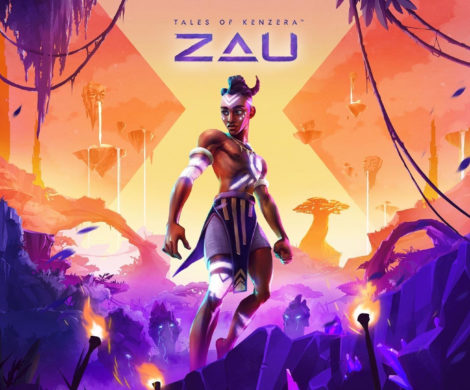
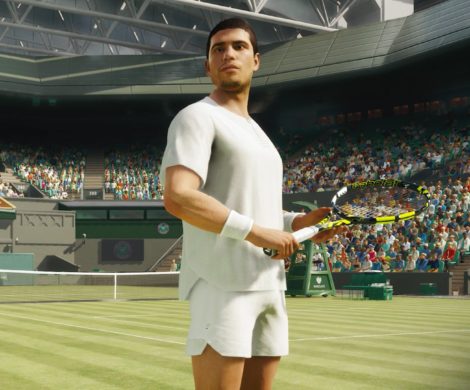
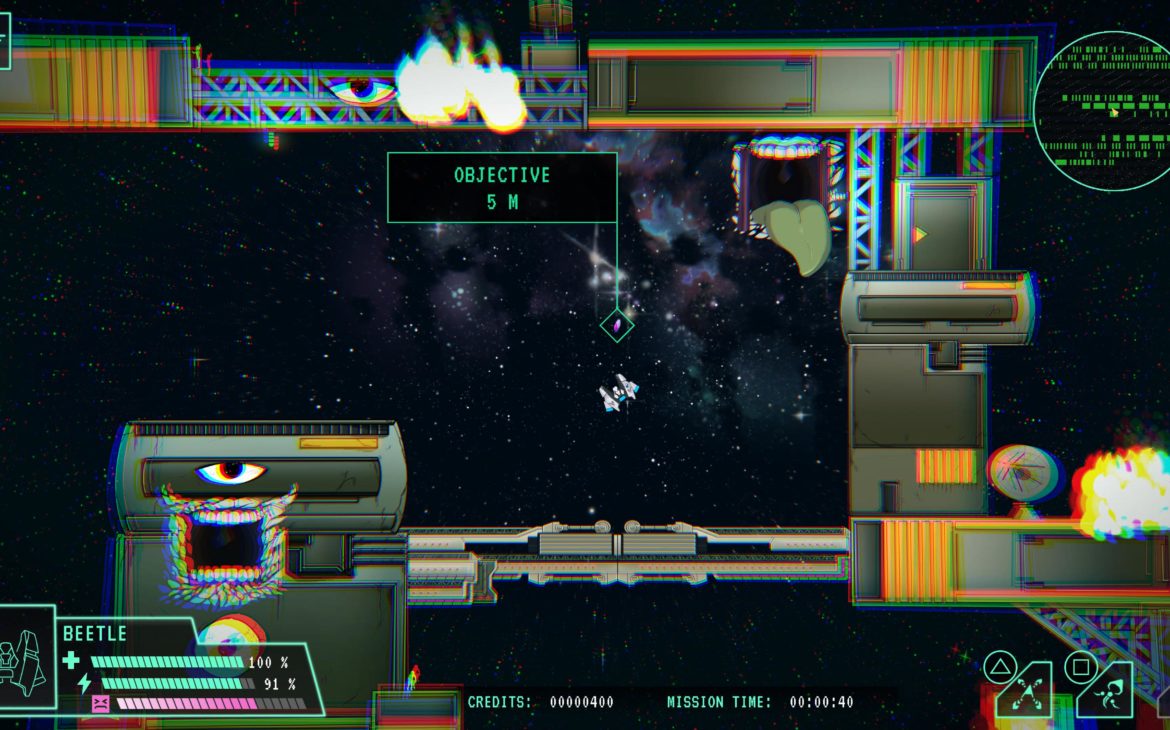

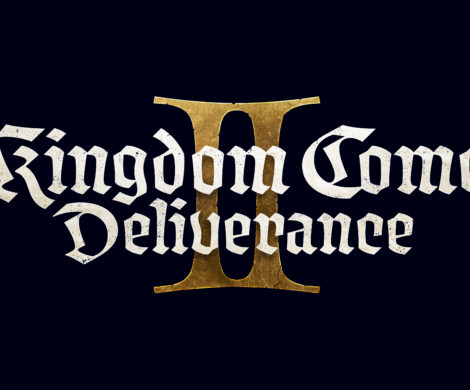
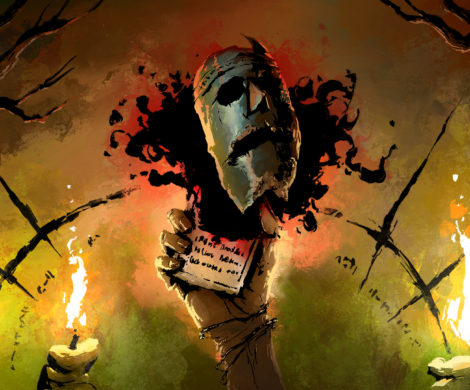
4 thoughts on “Final Fantasy VII Remake (PS4) Review – Seventh Heaven”